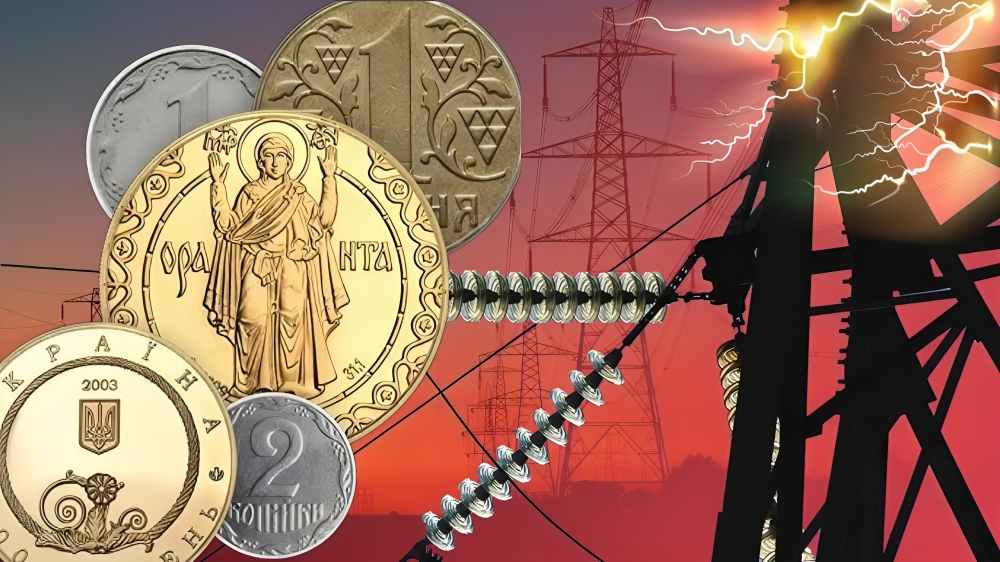Tariffs are frozen, but not forever: when to expect market prices for utilities
1 August 16:03
The cost of electricity and natural gas for consumers in Ukraine will increase in 2026. This forecast was published by the National Bank of Ukraine (NBU) in its updated macroeconomic report. The reason for the tariff increase is the need to normalize the functioning of the energy system, which has suffered significant damage due to the full-scale war and targeted attacks on energy infrastructure.
According to the NBU, energy prices will rise gradually. This will help avoid a sharp blow to the solvency of households and businesses, but at the same time ensure the stability of the energy market and allow covering the growing costs of repairing and restoring energy generation, transmission and distribution facilities.
Tariffs will rise: administrative inflation returns to the double-digit zone
In June 2025, administrative inflation in Ukraine slowed significantly to 10.9% year-on-year. The slowdown was caused by the “high comparison base effect” associated with a one-time increase in electricity tariffs in June 2024. This factor, according to the regulator’s estimates, contributed to a 1.7 percentage point decline in the overall inflation rate.
The NBU predicts that administrative inflation will continue to decline by the end of 2025. One of the key factors will be the continuation of the current moratorium on raising tariffs for households for certain housing and utility services, including heating, water, and gas. This policy, despite budgetary risks, has so far helped to restrain the growth in household spending and reduce overall pressure on the consumer price index.
However, the trend will not be sustainable in the medium term. As the economy continues to stabilize and the energy infrastructure needs to be rebuilt, the government and the NBU expect a gradual increase in utility tariffs to market-based levels. Given the deterioration of the networks, the cost of restoring damaged facilities after Russian shelling, and the increased cost of energy procurement, the government is forced to look for ways to balance the financial model of the industry.
According to the NBU, such fiscal and administrative measures will lead to a gradual acceleration of administrative inflation in 2026-2027. By the end of the forecast period, its rate is expected to exceed 10% again, reaching a double-digit level. At the same time, the NBU emphasizes that this will be a controlled growth within the permissible inflation target set out in the regulator’s medium-term strategy.
The document also emphasizes the importance of continuing the policy of inflation targeting and a flexible exchange rate, which will help mitigate the impact of administrative shocks on the overall price level. Together with the gradual liberalization of tariff policy, this strategy should ensure predictability of price dynamics and trust in the state’s macroeconomic policy.
Energy is getting more expensive: an expert explains why Ukrainians will have to pay more
According to economist Andriy Novak, who gave an exclusive commentary to
The announced tariff increase has real reasons. First, it is a general increase in the cost of goods and services. Secondly, and most importantly, there are the huge economic losses incurred by the energy system due to targeted attacks on critical infrastructure. It is impossible to cover these costs exclusively at the expense of the state budget,” Novak said.
The expert added that the Government’s logic in the current situation is clear: part of the costs will have to be passed on to consumers. This is a painful but inevitable decision. We are talking about both the population and business.
These are objective circumstances that force the government, whatever it is, whatever its political color or name, these objective circumstances force the government to raise tariffs for both the population and business in order to even cover direct losses from Russian attacks on Ukrainian energy,” Novak said.
Read also: Expert names new electricity tariffs in 2025
The NBU warns that electricity and gas tariffs will rise in 2026. What it means for the economy
The increase in tariffs will inevitably affect the cost structure of Ukrainian households and businesses. For households, this will mean higher utility bills, and for businesses, it will mean a revision of production costs. At the same time, the Government declares its readiness to maintain targeted support mechanisms for the most vulnerable segments of the population.
Another question is how much these tariffs will be raised. This depends on economic calculations. And we must also objectively understand that the situation changes every day, every week, every month,” explained the energy expert.
In addition, the dynamics of military operations will be a key factor in the scale and pace of the increase. According to Novak, every new week of military confrontation between Mokva and Kyiv brings destruction to the domestic energy sector. The scale of damage is impossible to predict and is constantly growing.
Every day we see new missile and drone attacks on energy facilities. This creates new costs and risks for the industry, and these are the factors that will influence the final tariffs,” the economist emphasized.
Novak added the following:
“At the end of this year, it is impossible to predict what the losses will be in the energy sector, as well as in other areas. Therefore, no matter how much we would like tariffs not to change or decrease, we must objectively take into account the circumstances of the war.
Moratorium saves from price shock, but not for long: what will happen to tariffs next
Despite the difficult circumstances, the Government and the NBU see gradual liberalization of tariffs as a way to a more sustainable and competitive energy system. A return to market-based pricing mechanisms is seen as a prerequisite for attracting investment in the sector’s recovery.
The final parameters of the tariff policy in 2026 will depend on the security situation, the financial capacity of the state budget, and the ability of energy companies to adapt to the new reality.
Читайте нас у Telegram: головні новини коротко









